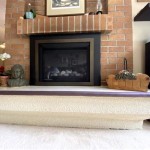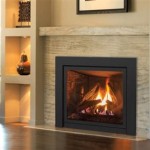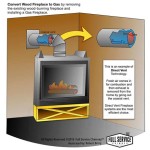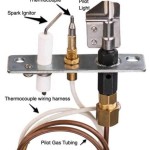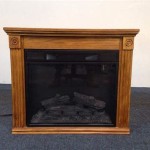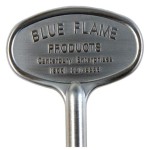Table Fireplace Outdoor: Enhancing Outdoor Living Spaces
Outdoor living spaces have become increasingly important for relaxation, entertainment, and overall well-being. As homeowners seek to extend their living areas beyond the confines of their homes, the demand for aesthetically pleasing and functional outdoor features has surged. Among these features, table fireplaces have emerged as a popular option, offering a unique combination of ambiance, warmth, and practicality. This article explores the various aspects of table fireplaces designed for outdoor use, covering their types, benefits, safety considerations, and maintenance requirements.
A table fireplace, in the context of outdoor use, refers to a self-contained fire feature that is integrated into or rests upon a table. These fireplaces are typically designed to be portable and relatively easy to install, making them a versatile addition to patios, decks, gardens, and other outdoor areas. They are distinct from traditional outdoor fireplaces or fire pits, often requiring less space and offering a more refined aesthetic. Their design allows them to serve as both a functional table and a source of warmth and visual appeal.
Table fireplaces are available in a variety of materials, shapes, and sizes, allowing homeowners to choose options that best complement their existing outdoor décor and meet their specific needs. The types of fuel they use can also vary, impacting their ease of use, environmental impact, and overall cost of operation. Understanding the different types of table fireplaces is essential for making an informed purchasing decision.
Types of Table Fireplaces
Table fireplaces can be categorized based on the type of fuel they utilize. The most common types include propane, natural gas, ethanol, and gel fuel options. Each fuel source offers distinct advantages and disadvantages in terms of convenience, cost, and environmental impact.
Propane Table Fireplaces: These fireplaces use propane gas, which is stored in a portable tank. They are generally easy to operate, providing instant heat with the turn of a knob. Propane offers a good balance of cost-effectiveness and convenience. The primary drawback is the need to store and refill propane tanks, which can be cumbersome for some users. Propane table fireplaces often feature adjustable flame heights, allowing for customization of the heat output and aesthetic appeal. The installation typically involves connecting the fireplace to a propane tank using a regulator and hose. Safety features include flame failure devices that shut off the gas supply if the flame is extinguished.
Natural Gas Table Fireplaces: Natural gas fireplaces are connected directly to a natural gas line, eliminating the need for fuel storage and refilling. This makes them a convenient option for homeowners who have access to a natural gas supply. However, installation requires professional plumbing and may involve additional costs. Natural gas is generally more affordable than propane, but the initial setup expenses can be higher. Similar to propane models, natural gas table fireplaces often come with adjustable flame controls and safety features designed to prevent gas leaks and ensure safe operation.
Ethanol Table Fireplaces: Ethanol fireplaces use liquid ethanol fuel, which is derived from renewable sources. They are ventless, meaning they do not require a chimney or flue, making them easy to install in a variety of outdoor locations. Ethanol burns cleanly, producing minimal smoke and odor. However, ethanol fuel can be more expensive than propane or natural gas. The heat output of ethanol fireplaces is typically lower than that of gas-fueled models. They are often chosen for their aesthetic appeal and ease of use, rather than their heating capabilities. Refilling the fuel reservoir is a simple process, but it is important to use only ethanol fuel specifically designed for fireplaces.
Gel Fuel Table Fireplaces: Gel fuel fireplaces use gel-based fuel canisters that are placed directly into the fireplace. They offer a clean-burning flame and are relatively easy to use. Like ethanol fireplaces, gel fuel models are ventless and do not require any special installation. However, gel fuel can be expensive, and the heat output is typically lower than that of propane or natural gas fireplaces. Gel fuel fireplaces are often used for decorative purposes and to create ambiance rather than providing significant warmth. The fuel canisters are disposable, simplifying cleanup, but this also contributes to ongoing fuel costs.
The choice of fuel type depends on individual preferences, budget considerations, and the availability of fuel sources. Propane and natural gas offer higher heat output and are suitable for providing warmth in cooler weather, while ethanol and gel fuel are better suited for creating ambiance and decorative effects.
Beyond the fuel type, the selection of materials used in the construction of a table fireplace is crucial for its durability and aesthetic appeal. Common materials include stainless steel, concrete, stone, and composite materials. Stainless steel offers excellent resistance to corrosion and is a popular choice for modern designs. Concrete and stone provide a more rustic and natural look. Composite materials are lightweight and durable and can be molded into various shapes and finishes.
Benefits of Using a Table Fireplace Outdoors
Table fireplaces offer several benefits that make them an attractive addition to outdoor living spaces. These benefits include providing warmth, enhancing ambiance, and increasing the usability of outdoor areas throughout the year.
Providing Warmth: Table fireplaces generate heat, allowing homeowners to extend the use of their outdoor spaces into the cooler months. The heat output varies depending on the fuel type and the size of the fireplace, but even smaller models can provide a noticeable amount of warmth, creating a comfortable environment for outdoor gatherings. This extends the seasonal usability of patios, decks, and other outdoor areas, allowing homeowners to enjoy their outdoor spaces for a greater portion of the year. The warmth provided by a table fireplace can be particularly beneficial in regions with mild winters or cool evenings.
Enhancing Ambiance: The flickering flame of a table fireplace creates a warm and inviting atmosphere, enhancing the ambiance of outdoor spaces. The visual appeal of the flames adds a touch of elegance and sophistication, making it an ideal focal point for outdoor gatherings. Table fireplaces can be used to create a cozy and intimate setting for romantic evenings or lively social gatherings. The ambiance created by the flames can also have a calming and relaxing effect, promoting relaxation and reducing stress. The availability of different flame patterns and decorative elements allows homeowners to customize the look and feel of their outdoor spaces.
Increasing Usability of Outdoor Areas: By providing warmth and enhancing ambiance, table fireplaces increase the usability of outdoor areas, making them more inviting and comfortable for extended periods. This allows homeowners to enjoy their outdoor spaces for a greater portion of the year, even during cooler weather. A table fireplace can transform a previously underutilized patio or deck into a popular gathering spot for family and friends. The increased usability of outdoor spaces can also enhance the overall value of a home, making it a worthwhile investment. Furthermore, the addition of a table fireplace can encourage homeowners to spend more time outdoors, promoting a healthier and more active lifestyle.
The benefits of using a table fireplace outdoors extend beyond mere functionality. They contribute to the overall enjoyment and usability of outdoor living spaces, enhancing the quality of life for homeowners and their families.
Safety Considerations When Using Table Fireplaces
While table fireplaces offer numerous benefits, it is essential to prioritize safety when using them. Proper installation, operation, and maintenance are crucial for preventing accidents and ensuring the well-being of users. Several key safety considerations should be taken into account.
Proper Installation: The installation of a table fireplace should be carried out according to the manufacturer's instructions and in compliance with local building codes. For propane and natural gas models, it is recommended to have a qualified professional handle the installation to ensure that gas lines are properly connected and that there are no leaks. The fireplace should be placed on a stable and level surface, away from flammable materials such as dry leaves, branches, and fabrics. Adequate clearance should be maintained around the fireplace to prevent accidental contact with hot surfaces. For ethanol and gel fuel models, the fireplace should be placed on a heat-resistant surface to protect the underlying table or deck.
Safe Operation: When operating a table fireplace, it is important to follow the manufacturer's guidelines and to exercise caution. Never leave a burning fireplace unattended, and keep children and pets away from the flames. Use only the type of fuel recommended by the manufacturer, and avoid overfilling the fuel reservoir. When refilling the fuel reservoir of an ethanol or gel fuel fireplace, ensure that the flame is completely extinguished and that the fireplace has cooled down before adding more fuel. Never use flammable liquids other than the specified fuel to start or accelerate the flame. In windy conditions, it may be necessary to shield the fireplace from the wind to prevent the flame from being blown out or from spreading to nearby materials.
Regular Maintenance: Regular maintenance is essential for ensuring the safe and efficient operation of a table fireplace. Clean the fireplace regularly to remove debris and soot, and inspect it for any signs of damage or wear. Check gas lines and connections for leaks on propane and natural gas models, and replace any worn or damaged parts immediately. For ethanol and gel fuel models, clean the fuel reservoir regularly and replace the fuel canisters as needed. Store fuel in a safe and secure location, away from heat sources and flammable materials. By performing regular maintenance, homeowners can prevent potential hazards and prolong the lifespan of their table fireplace.
Adhering to these safety considerations will help ensure that table fireplaces are used responsibly and that users can enjoy their benefits without compromising their safety or the safety of others.
In addition to safety, understanding local regulations and permits is crucial before installing a table fireplace. Some municipalities may have specific requirements regarding the placement, size, and type of outdoor fireplaces. It is important to check with local authorities to ensure compliance with all applicable regulations. This can prevent potential fines and ensure that the fireplace is installed and operated legally.
Finally, choosing the right size and design is vital. The size of the table fireplace should be proportionate to the size of the outdoor space. A large fireplace in a small area can overwhelm the space, while a small fireplace in a large area may not provide sufficient warmth or ambiance. The design of the fireplace should complement the existing outdoor décor and reflect the homeowner's personal style. With careful planning and consideration, a table fireplace can be a valuable asset to any outdoor living space, offering years of enjoyment and enhancing the overall quality of life.

Rectangular Concrete Bio Ethanol Tabletop Fireplace Indoor And Outdoor Upyoga

Outdoor Fireplaces Firepits Gas Fire Tables Table

12 Best Tabletop Fire Pits In 2024 Top Picks

Sedona Outdoor Fireplace Round Propane Natural Gas Fire Table

The Best Outdoor Fire Pit Table And Fireplaces In 2024

Concrete Grey Tabletop Fireplace Outdoor Gas Fire Pit Table China Made In Com

Outdoor Custom Gas Firepits Jetmaster Fireplaces

Rectangle Tabletop Bioethanol Fireplace Vonhaus

30 Outdoor Fireplace Ideas Cozy Fireplaces

Hugedomains Com Foyer Extérieur Table De Brasier Tir
Related Posts

